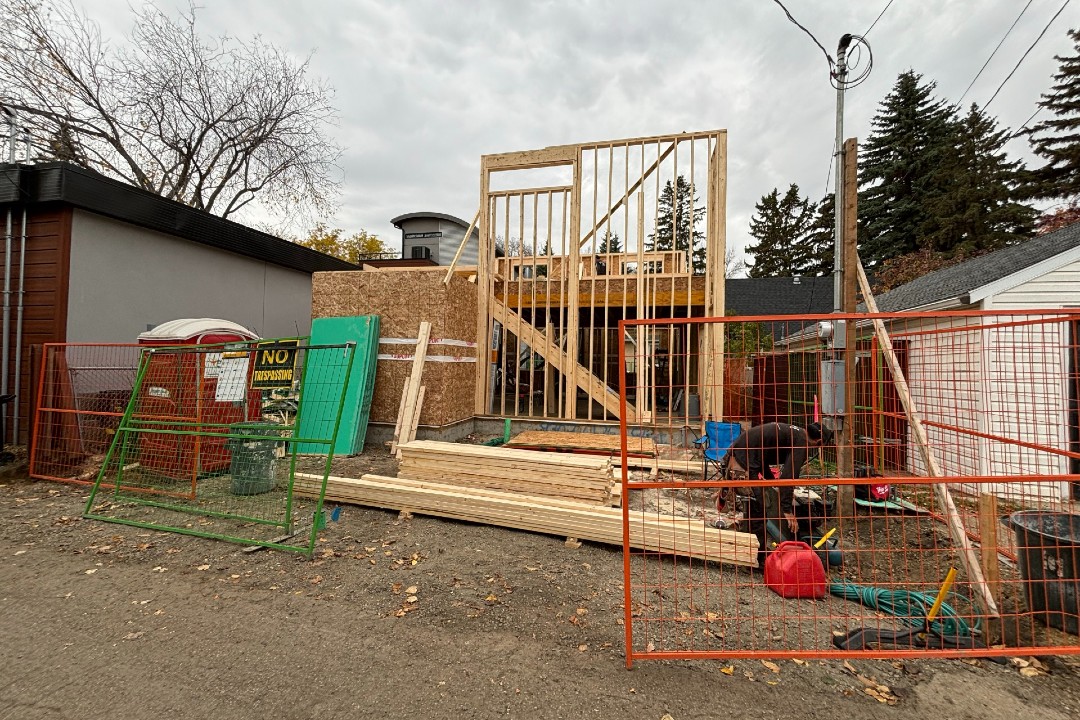The co-hosts of Episode 313 of Speaking Municipally discussed how a city council committee has endorsed a motion to send proposed changes to its country-leading housing policy to a public hearing on June 30.
The proposal is to specify the number of infill housing units that Edmonton's blanket zoning allows to decrease from eight to six when said housing is within the middle of a block. While some have framed the proposed change, driven by a motion introduced by Coun. Michael Janz, as a subtle shift that codifies what was already the rule, others, including The Globe and Mail editorial board, suggests Edmonton's council is now caving to those who want to slow change on housing, should the councillors approve the amendments on June 30.
1. Mid on midblock?
Co-host Mack Male said the motion at council's urban planning committee caught him off guard. "This is surprising to me ... for a few different reasons — one being that I think, as you and I talked about before, this felt like it might be a little bit of an election issue and perhaps something that we might want the next council to make a decision about," he said.
He added that Mayor Amarjeet Sohi said during the committee discussion that some residents have concerns about density, but those concerns must be weighed with the importance of Edmonton meeting its infill goals to increase both the city's fiscal sustainability and its reductions to carbon output.
2. The policy and the politics
Male then asked co-host Troy Pavlek what the practical implications of the committee decision are.
"It's honestly nothing," Pavlek said. "So this is coming with a suite of zoning bylaw changes that we talked about in a previous episode — things like, you know, doors not facing other side yards, some architectural design changes, some more guidance on setbacks. And the practical changes and the practical meaning of all of those changes is that, basically, all midblock lots in the City of Edmonton, if they're following every other regulation, kind of (already) can't have ... eight units, right?"
Pavlek also noted Janz said the regulations already prevent eight-unit buildings on midblock lots, and that this proposed change aims to make that explicit, but read deeper than that. "My take on this is that this is exceptionally bad policy that's probably really good politics," he said.
3. Variation leads to variances?
Why does he think this is bad policy? Pavlek said other changes, like buildings with single-egress stairwells (also known as point-access blocks, which Taproot has reported on) could change what housing is possible in midblock scenarios, allowing new building types and increased unit counts.
"I think at the end of the day, when (the city introduced the small-scale flex residential) zone, the idea was we're building something that's very flexible and we're doing a mass upzoning to give every lot the same potential," Pavlek said. "Now, corner lots have more potential than midblock lots, and I'm rolling the dice, as a betting man, we're going to get a midblock rezoning request to city council to say 'I want, on this midblock parcel, a variance to do up to eight units.' As soon as one of those comes to public hearing, it'll be clear that we've lost the plot and this was an error."
The June 20 episode also included discussion of single-use plastic, street design standards, and more. Speaking Municipally is released on Fridays. Listening and subscription options are all right here.

